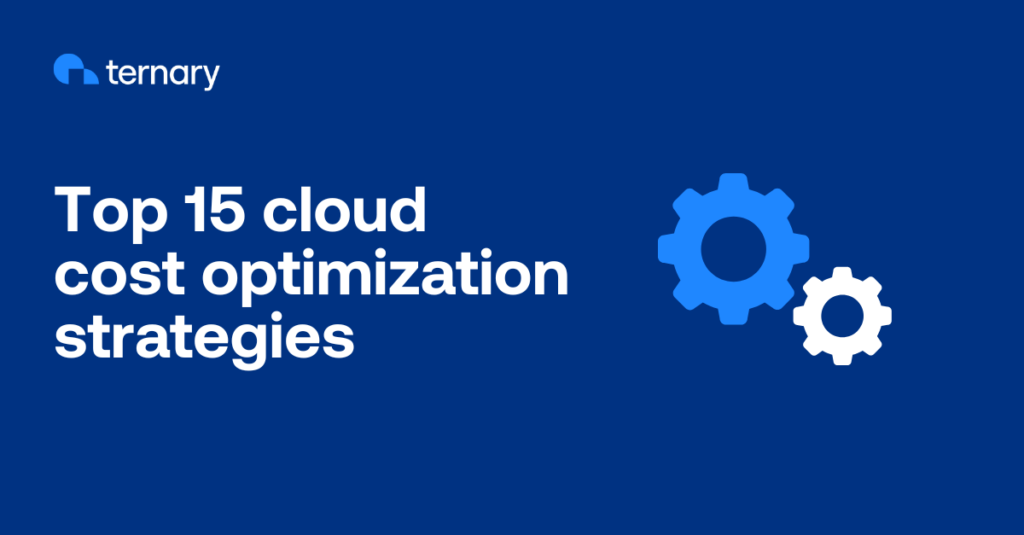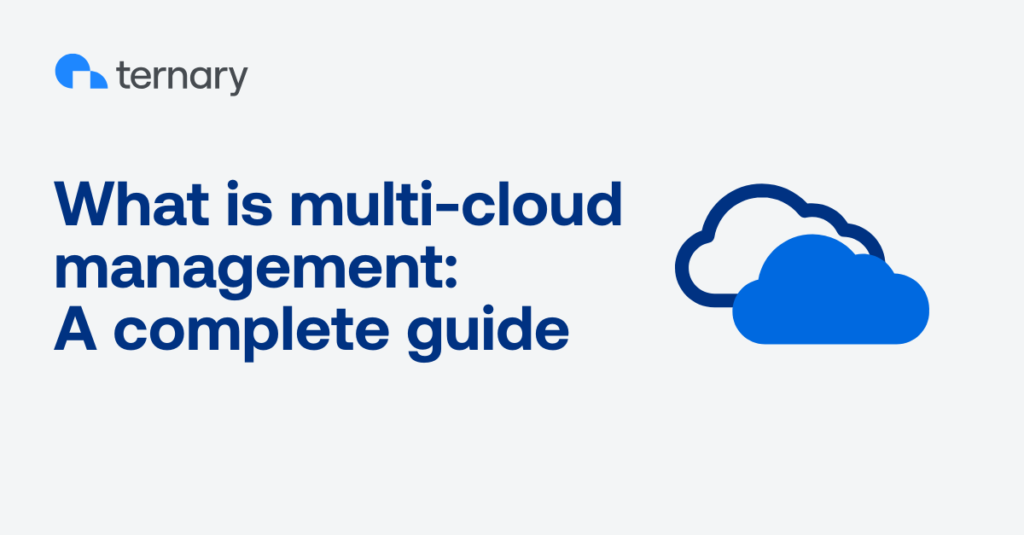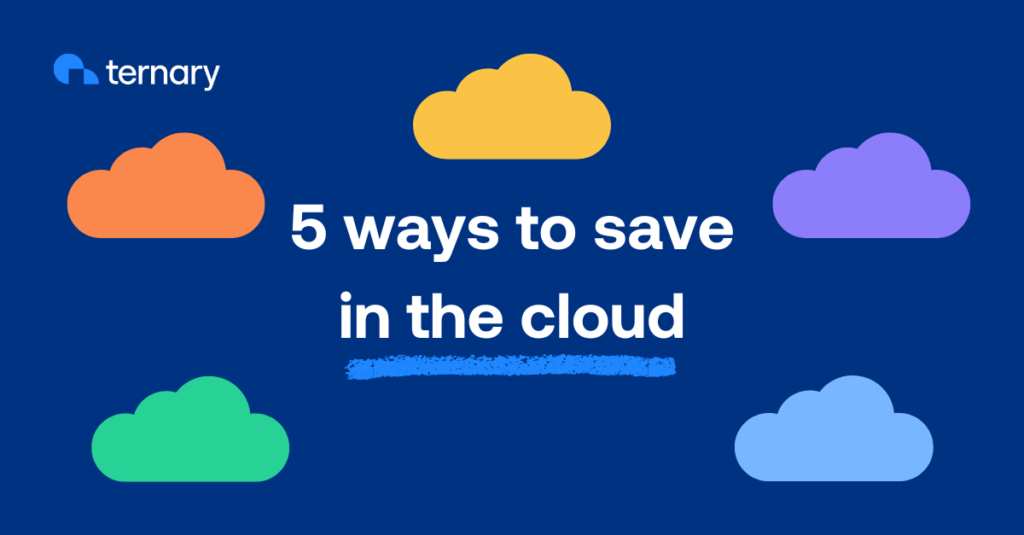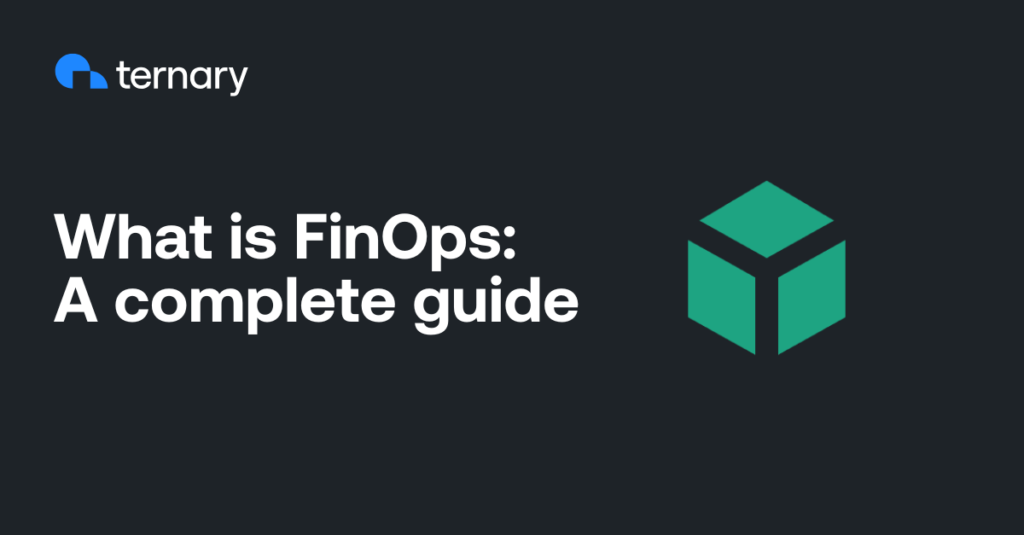Despite widespread cloud adoption, managing cloud spend remains a top challenge for many organizations.
According to the State of FinOps 2025 by the FinOps Foundation, 50% of practitioners indicated that workload optimization and waste reduction are the top priority for their organization.
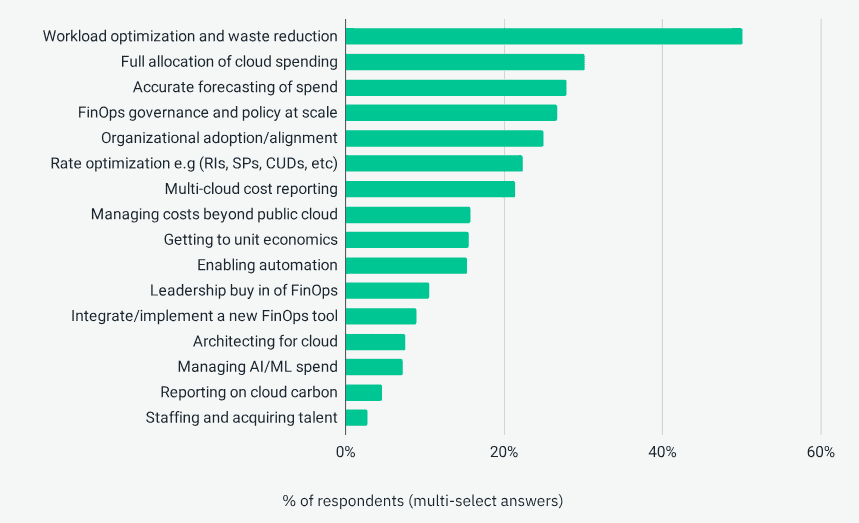
In a previous post, we highlighted five ways to achieve cloud cost savings. In this guide, we’ll go a step further by featuring 15 proven methods to optimize cloud costs and reduce spend. Let’s start.
1. Gain full cost visibility
The first cardinal rule of cloud cost optimization is that you can’t manage what you can’t see.
Organizations often find themselves surprised by their monthly cloud bills, because they have no clue where, exactly, the spend is occurring.
That’s why, before implementing cloud cost optimization strategies, you need a consolidated, unified view of all cloud-related expenditures.
A single-pane-of-glass dashboard gives clarity into who’s using what, and for what purpose.
The Linux Foundation invested in Ternary as their FinOps platform for multi-cloud visibility. This enabled them to track historical spending and forecast costs by project and team, providing full-spectrum visibility, which in turn laid the groundwork for optimization.
2. Track key cost metrics
If you want to optimize cloud spend, you can’t just look at the total cost and shrug. You need to break it down into real, actionable metrics.
This is where unit economics becomes your north star. It is foundational to managing cloud costs the right way.
Here’s a quick cheat sheet of metrics to track:
| Metric | What it does |
|---|---|
| Unit cost | Links cloud spend to business value. Helps assess ROI and profitability. |
| Idle resource cost | Exposes inefficiency in terms of cloud resource usage. Shows how much you pay when nobody’s using the system. |
| Shared infrastructure | Reveals the complexity of managing shared costs. Encourages fair billing across teams. |
| Cost/load curve | Predicts scalability issues. Are costs growing linearly with traffic or exponentially? |
| Innovation/cost ratio | Compares R&D spend to production cost. Great for long-term budget planning and effective cloud cost optimization. |
3. Foster a cost-conscious culture
You can automate and rightsize all you want, but if your engineering teams aren’t keeping costs in check, your efforts will be futile. If you truly want to optimize cloud spend, you need everyone in the organization working toward the same goal.
Therefore, foster a culture where every developer, tester, and project lead treats cloud costs as a part of the product-quality matrix.
This requires visibility. Engineers need access to cost data. Not buried somewhere six dashboards deep—visible, accessible, and updated regularly.
Forming a FinOps team that includes Engineering, Finance, and leadership is the tactical move here. This team is responsible for tracking, analyzing, and, importantly, optimizing cloud spend across projects.
By making cloud spend transparent and tying it directly to operational efficiency goals, you can turn cloud spend optimization into a team sport instead of a Finance-only problem.
Our cloud infrastructure costs were 17% of non-GAAP revenue. We reduced that down to 8% with Ternary.
Jamie Tischart, CTO, BetterCloud
4. Turn off idle resources
Turning off unused resources is one of the easiest cloud cost optimization strategies you can implement. Yet it often gets overlooked.
Developers are fantastic at spinning up compute instances, load balancers, and storage volumes when they need them. But they’re not nearly as enthusiastic about cleaning them up afterward.
Cloud cost management platforms can help flag idle or underutilized assets. Even better, you can set policies or scripts to automatically shut down resources during off hours or after prolonged inactivity.
Some organizations even merge underutilized or unattached resources into fewer rightsized instances, to simultaneously reduce spend and boost performance.
5. Delete unused snapshots
You know what’s sneakier than scope creep? Snapshot creep. Over time, backups and snapshots multiply, and, before you know it, your storage costs are outpacing your growth.
That’s where centralized backup strategies come in.
6. Rightsize compute resources
Overprovisioning is one of the most common (and expensive) mistakes in cloud infrastructure. When a virtual machine (VM) is sized for peak loads, or when it’s spun up in a rush, you often end up paying more.
Rightsizing resources (e.g., CPU, RAM) to meet actual workload requirements fixes that.
Multiply that kind of adjustment across multiple projects, and the cloud cost savings scale quickly.
7. Leverage commitment-based discounts
Predictable workloads are low-hanging fruit when it comes to optimizing cloud costs, and leveraging commitment-based discounts is how you pick them.
Rather than paying on-demand rates for resources you know will be running constantly, you lock in one- or three-year commitments at significantly reduced rates. Each cloud provider offers their own flavor of commitments, such as Google Committed Use Discounts (CUDs) or Savings Plans for AWS and Microsoft Azure.
8. Use preemptible or spot VMs
For workload patterns that can tolerate interruption, like batch processing, CI/CD pipelines, or other stateless operations, preemptible or spot VMs are a highly efficient cost-saving tool.
These are short-lived instances offered at a fraction of the cost of regular VMs, with the trade-off being that they can be terminated at any time if the cloud provider needs the capacity back.
9. Implement a cloud-native design
You can “lift and shift” your legacy apps into the cloud. But doing so without optimizing is like moving your messy garage into a luxury apartment.
Sure, you’re in a new place, but you’re still paying too much for stuff you don’t need. That’s why designing applications with cloud-native principles is a must for anyone serious about reducing cloud costs.
Cloud-native apps are purpose-built for scalability, elasticity, and efficient resource use. Unlike their on-premises ancestors, these apps thrive in dynamic environments. They can autoscale, rely on managed services, and adapt to load without human intervention or hefty overprovisioning.
Of course, there’s a learning curve. However, the long-term payoff is massive savings and vastly improved system performance, because these new systems use resources more efficiently, self-heal, and scale down when idle.
10. Deploy autoscaling
Autoscaling gives your infrastructure a brain. It knows when to grow, when to shrink, and, most importantly, when to stop guzzling money for no reason.
The principle is simple: Resources expand and contract automatically based on real-time demand.
Services like Google Cloud Composer with autoscaling make it ridiculously easy to keep performance high while resource usage stays lean.
11. Adopt serverless and managed services
Leveraging serverless and managed services is the “less code, less cost” trick in modern cloud cost optimization strategies.
Managing VMs and infrastructure is so 2010. Today’s lean teams are turning to services like BigQuery, Cloud SQL, Spanner, and Composer, especially with features like autoscaling that adjust to demand (and your budget).
12. Optimize storage costs
Storage might seem harmless. After all, what harm could a few extra gigabytes here and there do? But, at scale, storage costs can sneak up like a financial disaster. And, once this issue escalates, disaster recovery becomes quite a headache.
That’s why optimizing storage is a critical piece of any serious cloud cost optimization best-practices playbook.
If you’re keeping infrequently accessed data in expensive regional storage, you’re basically lighting money on fire. Google Cloud’s Coldline and Nearline storage options offer significantly lower rates for data to which you don’t need instant access.
13. Reduce egress costs
Every step your data moves outside its home costs you cash.
You move data between zones or regions: Suddenly, you’re being charged with surge pricing.
If you’re not actively managing data transfer, you’re basically handing over free money to your cloud service provider.
Data egress fees hit hardest when you’re constantly shuffling data between zones or regions, or even between services within the same cloud.
Many companies don’t even realize how inefficient their data transfer strategies are—until the bill drops.
14. Build a multi-cloud strategy
According to a 2020 Oracle survey, 76% of companies were already running two or more public clouds, with billion-dollar enterprises often juggling three or more.
Going multi-cloud means using services from more than one cloud service provider. Why? Because no single provider is perfect at everything.
Each one has unique strengths, pricing models, and pricing rabbit holes that you can exploit to your advantage. Maybe Amazon Web Services (AWS) has the best deal for compute, but Google Cloud (GCP) wins on BigQuery.
Mixing and matching lets you pick the most cost-effective combination.
15. Automate cost controls
People are bad at remembering to turn things off—especially when they’re busy shipping features, putting out fires, or chasing down mystery bugs. That’s why automated policies or advanced automation tools for managing cloud spend are mandatory.
This can start with setting real-time budget alerting and anomaly detection. If a non-production environment suddenly spins up a $10,000 bill at 2am, because someone forgot that a query was running, you want to know about it—preferably before it burns through your quarterly budget.
Setting quotas is another non-negotiable move. For instance, a daily spending cap of $1,000 per project can prevent the classic “accidental infinite loop” BigQuery nightmare.
One customer, whose average monthly cloud bill is in the tens of thousands of dollars, began generating close to $1M per day in unexpected spend. The reason? Unintended duplication in BigQuery inserts was made during testing. Ternary Anomaly Detection helped the customer uncover the error before it became a bigger problem.
Optimize cloud costs with Ternary
You now know the 15 best cloud cost optimization strategies you can implement to gain better visibility of your cloud spend.
But it’s easier said than done, right?
Don’t worry—Ternary has your back. Ternary is a multi-cloud FinOps platform that helps you gain cloud cost visibility, build accurate forecasts, and reduce waste. Ternary has helped leading enterprises and managed service providers optimize cost and usage for their companies and clients.
Overcome your cloud spend challenges with Ternary.

